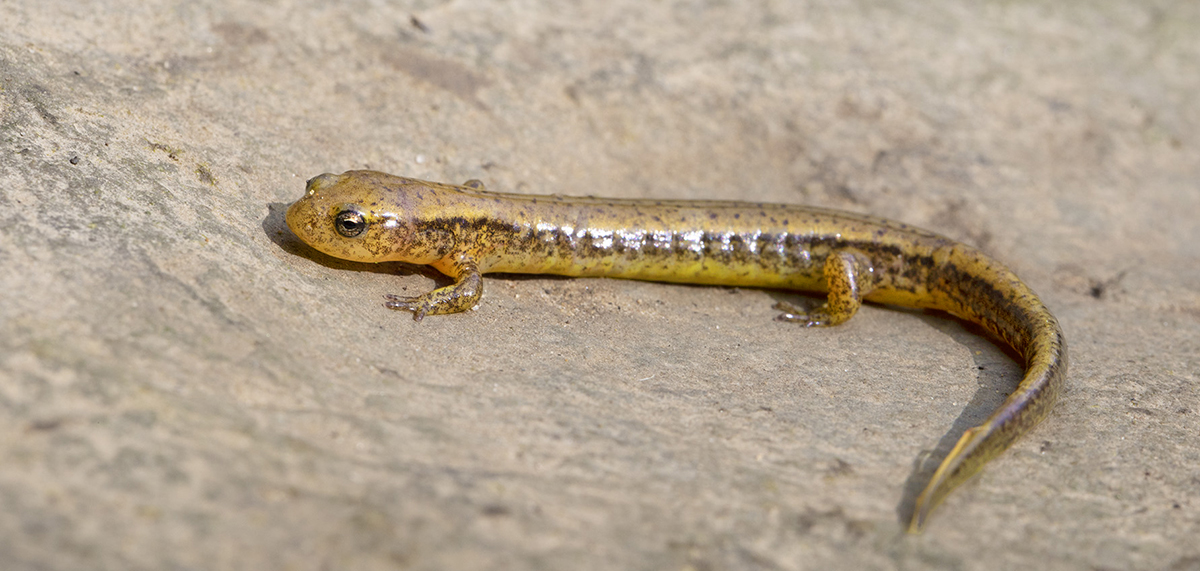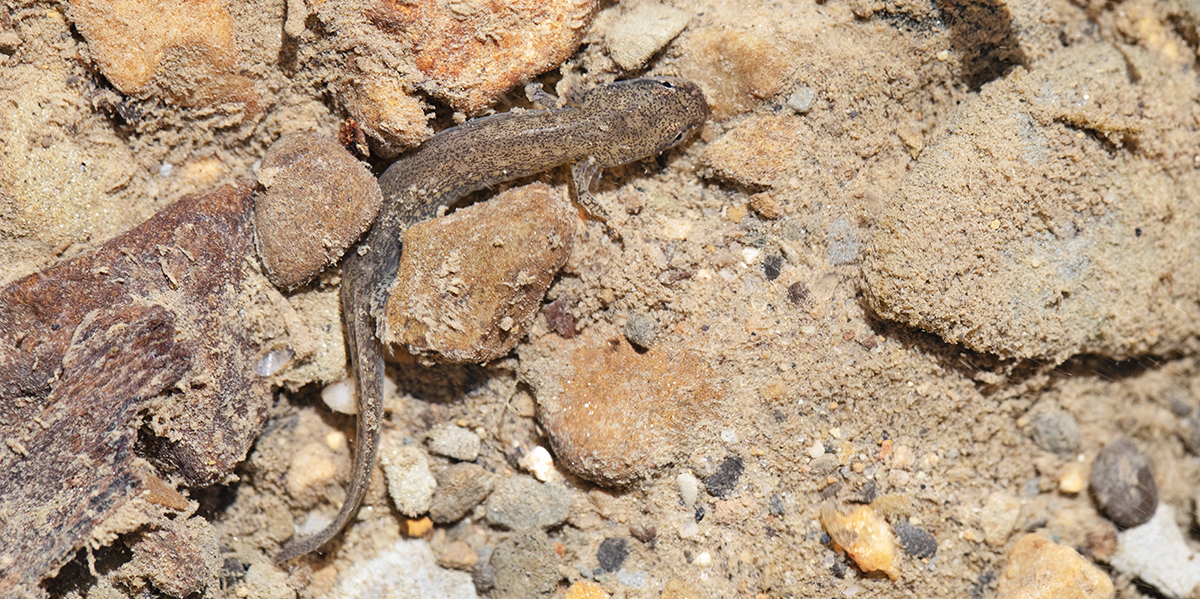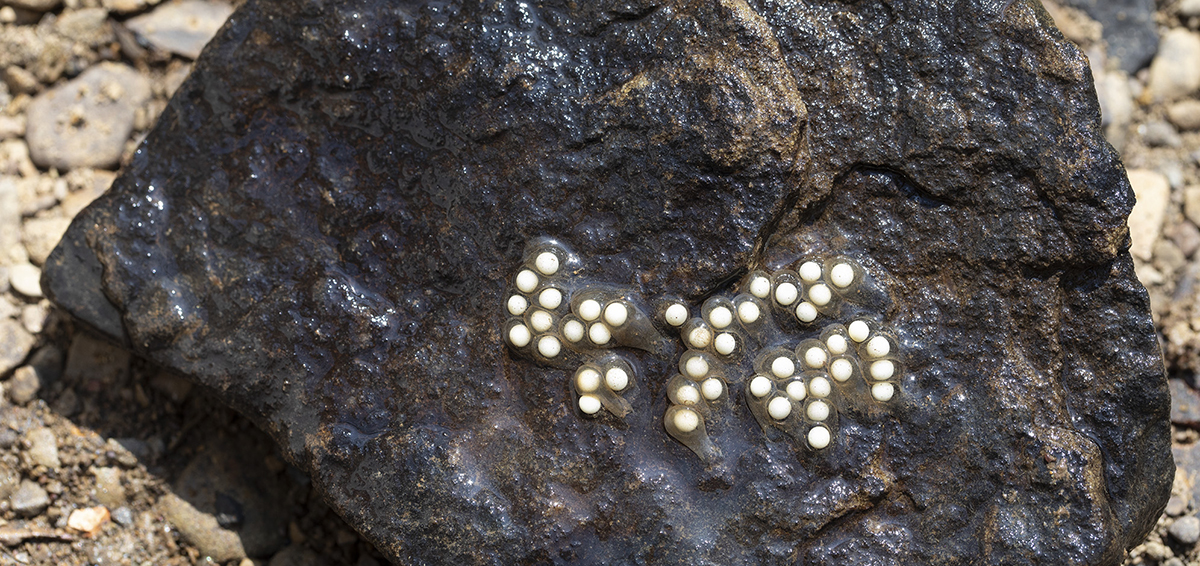LEAH CONWAY
Blacklick Woods Seasonal Naturalist

Two-lined salamanders are a common sight in Ohio streams and woodlands, if you know where and when to look. Most activity occurs the first hour after dark, when these nocturnal amphibians leave their favorite crevices under cobbles, boulders and logs in aquatic environments, or logs and burrows in terrestrial habitats. While on the prowl, adults will hunt wood roaches, worms, millipedes and centipedes, flies, arachnids, beetles, snails, and so much more.

Larvae, on the other hand, will remain in the stream they were born in until dropping their gills and metamorphosing into adults after two to three years, all the while consuming aquatic macroinvertebrates on the bottom of the slow-moving pool they find refuge in. But let’s not get ahead of ourselves! Before any of this can occur, two-lined salamanders must first hatch from their eggs.

A female will lay her eggs, one every three minutes, on the bottom of a large rock in a stream that holds water for all or most of the year. There, she will guard them until they hatch two to 10 weeks later. After hatching, they will absorb their yolk sac, and then begin hunting for their own food while attempting to evade predators such as fish, crayfish and other salamanders.
Adult life involves awaiting sexual maturity, which is reached at three to four years old, mating, avoiding detection by owls and snakes, and possibly undergoing a seasonal migration. After an adult breeds in March or April, it will, if climate demands, migrate from the streams where reproduction occurs and live in the forest by June. There, it will live under logs, and come winter, will burrow up to 31.5 inches into the soil.
